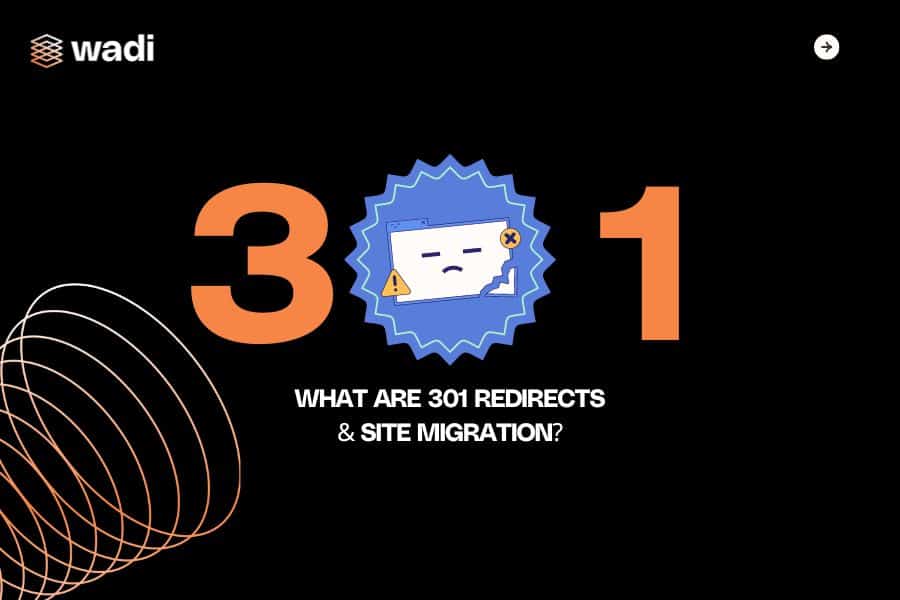Table of Contents
ToggleWhat are 301 Redirects?
There are several types of redirects. A 301-page redirection is used when the old version and the new version of the site have different URLs. It is a permanent redirect from an old URL to a new one. In fact, 301 is an HTTP code that is interpreted as “moved permanently.” 301-page redirection directs visitors of the site to a different URL than the one that they originally keyed-in to their browser or chosen from a search engine results page. Websites should utilize 301 redirects when they are moving from one URL to another so that their visitors are directed to the right site.
When applying redirects on a website, 301-page redirection is considered as the best and most efficient method. This is because it easily sends site visitors and search engines to a different URL without having to retype anything. This is one way of ensuring that online traffic gets directed towards the most up-to-date version of a URL. 301-page redirection is important in order to maintain a website’s domain authority.
Importance of 301 Redirects for SEO
When it comes to maintaining your website’s search engine visibility during a site migration, 301 redirects play a crucial role. These redirects signal to search engines that your content has moved permanently to a new location, preserving the valuable SEO equity built over time. Without proper redirections, search engines may interpret your site’s content as lost or duplicated, resulting in a significant drop in rankings and organic traffic. By implementing 301 redirects strategically, you can ensure that both users and search engines seamlessly transition to your new site structure while preserving your hard-earned search engine rankings.
Using 301 Redirections when Conducting a Site Migration
When conducting a site migration, a certain website goes through extensive changes in essential areas that may affect search engine visibility. These changes usually refer to UX, coding, site structure, site performance, or content. 301 redirects should be used if the site transfers to or from another domain or subdomain. It should also be used to move from HTTP to HTTPS. When 301-page redirection is used during a site migration, it will inform search engines to index the new URL. It will also forward ranking signals from the old URLs to the new ones.
The main goal whenever there is site migration is not to lose SEO traffic. After carefully going through a site migration path which begins with using a sandbox or test server and crawling your site before the actual migration, you should also make a copy of your Google Analytics data so that you can identify if any traffic is lost after the migration. This includes making a list of all the URLs on the old site. Another important step is to map all changed URLs from old to new.
You can set up your redirects using a regex expression in the .htaccess file of the old site. This swaps out the domain name or exchanges it from HTTP to HTTPs. After moving content to the new domain, you can implement a permanent 301 redirect domain.
It is important to test redirects on a test server in order to verify that it doesn’t produce 404 errors. Before setting up the 301 redirect, make sure that the site is in pristine condition.
Common Mistakes to Avoid During Site Migration
While site migration can offer numerous benefits, it also presents several potential pitfalls that can negatively impact your SEO efforts if not managed properly. Some common mistakes to avoid include:
- Inadequate Planning: Rushing into a site migration without thorough planning can lead to unforeseen issues and disruptions. Take the time to develop a comprehensive migration plan that addresses key aspects such as URL structure, content organization, and redirection strategies.
- Neglecting 301 Redirects: Failing to implement 301 redirects or setting them up incorrectly can result in a loss of organic traffic and rankings. Ensure that all old URLs are redirected to their corresponding new URLs using proper 301 redirects to maintain SEO continuity.
- Overlooking Content Optimization: Use the opportunity of a site migration to optimize your content for SEO. Update meta tags, titles, and descriptions to align with your target keywords and ensure that content remains relevant and valuable to your audience.
- Ignoring Mobile Optimization: With mobile-first indexing becoming the norm, overlooking mobile optimization during a site migration can lead to decreased visibility in search results. Ensure that your new site is fully responsive and optimized for mobile devices to maintain search engine rankings.
- Forgetting to Notify Search Engines: Inform search engines of your site migration by submitting an updated XML sitemap and utilizing tools like Google Search Console to monitor indexing progress. This helps search engines recognize the changes and update their index accordingly, minimizing disruptions to your SEO efforts.
By avoiding these common mistakes and following best practices for site migration, you can ensure a smooth transition while safeguarding your SEO performance and maintaining visibility in search engine results.
Tools Used to Check on 301 Redirections
SEMRush
SEMRush is an online marketing research service. The SEMRush site audit is a website crawler that checks SEO issues, including checking for important HTTPS implementation errors and broken links. Before migrating a website and applying 301-page redirection, you can use this tool to check the success of the migration and point out common issues.
Screaming Frog
Screaming Frog has developed a tool, the SEO Spider, a desktop program that checks SEO issues and audits websites. It checks redirects in two ways: either crawling the website or uploading a list of URLs in bulk.
Are you planning your new website? Do you have a qualified SEO company to plan your site migration hand in hand with you? We at WadiDigital, B2B Digital Marketing Agency offer a free SEO review! Don’t miss this amazing opportunity and contact us.






